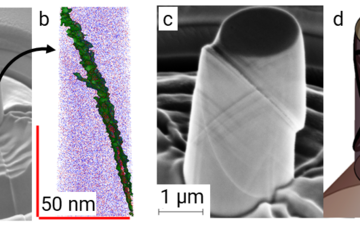All genres
1.
Talk
Crustacean cuticle: An example to study the influence of chemical composition and microstructure on the mechanical properties of hierarchically structured biological composite materials. Workshop Prospects in BIONIC, Leoben, Austria (2010)
2.
Talk
Chemical Imaging of Heterogeneous Materials: Allocation of Organic and Inorganic Components in Biomaterials. 1. Raman-Workshop Linz, Linz, Austria (2010)
3.
Poster
Influence of Structural Organization and Mineral Distribution on the Local Mechanical Properties of Mineralized Cuticle. Workshop Prospects in BIONICS, Leoben, Austria (2010)
4.
Poster
Influence of Structural Organization and Mineral Distribution on the Local Mechanical Properties of Mineralized Cuticle from the Crab Cancer pagurus. Materials Science and Engineering MSE 2010, Darmstadt, Germany (2010)











